#queen of galicia
Explore tagged Tumblr posts
Text
Boycott!

It pisses me off that people care more about the fact that Snow White doesn't have pale skin than that there's a fucking genocide going on in the world (By the way, fucking boycott Disney because they helped Israel financially)
But you can see that there are more important things, remember the Olympics? Instead of being concerned about Israel being allowed, people got more outraged because they thought the drag queen was parodying an image of Jesus and not mythology… Yeah, that was fucking more important to them and it still pisses me off
It pisses me off that bullshit like this makes people look away from the genocide going on in the world and it's fucked up, stop fucking looking away, I understand, you want to feel better, but while you're doing something else, don't forget about Gaza, Congo , Sudan, Haiti, Syria, Ukraine… Just don't forget about them, I'm begging you
Now that I have your word:
#palestinian#free palestine#cartoon#cartoonist#palestine#israel is a terrorist state#free gaza#israel#gaza#palestina#free free palestine#i stand with palestine#long live palestine#palestine action#palestine genocide#palestine news#palestine will be free#palestinian genocide#palestinian lives matter#palestinians#pray for palestine#pro palestine#save palestine#stand with palestine#strike for palestine#support palestine#we stand with palestine#snow white#boycott israel#keep boycotting
40 notes
·
View notes
Photo

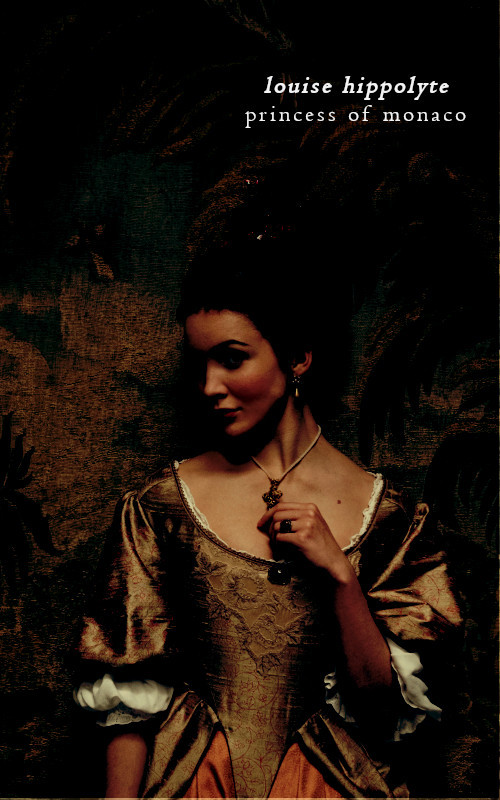
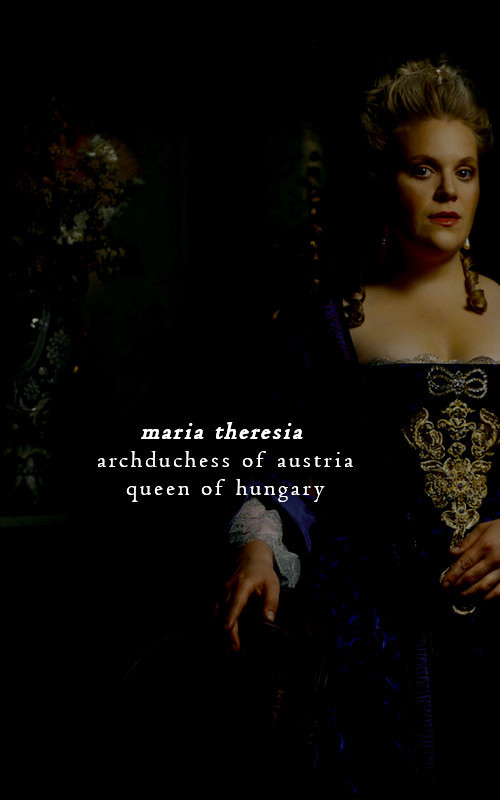

Favorite list of royal women | Regnant queens (who crowed herself queen without her husbands)
Been a queen regnant is not always easy specially when you are married but mor common than one would think. Here four of my favorite queen that were married and despite what society, and often the husband himself, thought decided that her lands by heritage or conquest were only hers to rule.
i. [1081-1116] Called The Reckless, Urraca was one of the most powerful reigning Queens of her time having inherithed the kingdom of León. Upon the death of her first husband she was convinced to marry Alfonso of Aragon the most successful warrior king of the Iberian Peninsula. It went horribly wrong. Personalities clashed and Alfonso emprisoned Urraca at one point. With Galicia rebelling and the Almoravides menace the spouses still went to war againts each other. Finally they separate and while Urraca still has a long way ahead and could keep most of her lands for herself.
ii. [1697-1731] Louise Hyppolite was at her time of birth the last Grimaldi. Monaco was under French control and it was decided that man from the French King family will be Louise’s husband and rule along with her. She was married and had to leave her land with her husband. Described as shy and submissive she did not enjoy her time at Versailles. When her father was ill she came back alone to Monaco and when he died she crowned herself Princess of Monaco with the people enthusiastic support naming her firstborn heir. There is no much her husband could do and though she ruled fr a short time she did it as the sole Princess.
iii. [1717-1780] Maria Theresia’s father Emperor Charles VI of the Roman Empire, did not prepared her to rule as he was convinced that her husband would rule for her. However, she had other plans and when her father died Maria Theresa, a 23 years old set to stablish her right as a moanrch against Prussia and most of Europe. She manage to gain ruling experience and be a monarch for 40 years. Though she deeply loved her husband she did not let him rule in her name and even refused to kneel in front of him when he was elected Holy Roman Emperor as she was of highest ruler. She was Sovereign of Hungary and Bohemia and Archduchess of Austria on her own right her husband being the consort.
iv. [1583-1663] Njinga was Queen of Ndongo after her father and brother. At the time with the Portuguese slave trade Njinga became a symbol of resistance to the Europeans. In order to gain power in the center of the region she married an Imbangala leader and learned the techniques and strategies of his people. However when she set to conquer the kingdom of Matamba and ruled there as the Queen as Matamba had tradition of female rulers. As she gained influence she was recognized as one of the great queens of the region at the time.
#historical women#women in history#maria theresia#njinga of ndongo and matamba#urraca of leon#louise hyppolite of monaco#maria theresa of austria#history
152 notes
·
View notes
Text
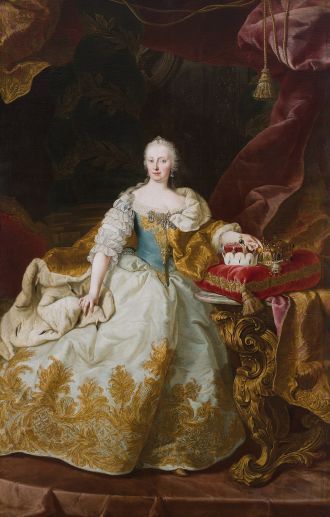
Empress Maria Theresa
Artist: Martin van Meytens the Younger (Swedish, 1695-1770)
Date: After 1742
Medium: Oil on canvas
Collection: National Gallery of Slovenia, Ljubljana, Slovenia
Description
Maria Theresa (Maria Theresia Walburga Amalia Christina; 13 May 1717 – 29 November 1780) was ruler of the Habsburg dominions from 1740 until her death in 1780, and the only woman to hold the position suo jure (in her own right). She was the sovereign of Austria, Hungary, Croatia, Bohemia, Transylvania, Slavonia, Mantua, Milan, Moravia, Galicia and Lodomeria, Dalmatia, the Austrian Netherlands, Carinthia, Carniola, Gorizia and Gradisca, Lusatia, Styria, Parma, etc. etc. By marriage, she was Duchess of Lorraine, Grand Duchess of Tuscany, and Holy Roman Empress.
In this painting the Empress Maria Theresa is clad in an opulent ceremonial robe, is standing beside a carved and gilded wooden table. In her left hand she holds an archduke’s crown, while in the background we see the crowns of Saint Stephen and Saint Wenceslas. This arrangement permits a dating of the painting to the time before Maria Theresa was crowned as queen of Hungary (1741) and of Bohemia (1743).
#portrait#painting#artwork#empress maria theresa#full length#carved and gilden wooden table#archduke's crown#crown of saint stephen#gold embroidery#red velvet pillow#puffed lace sleeves#jewelry#tiara#holy roman empire#holy roman empress#house of habsburg#ceremonial robe#fine art#oil on canvas#oil painting#swedish culture#swedish art#martin van meytens the younger#swedish painter#european art#18th century painting#national gallery of slovenia
19 notes
·
View notes
Text
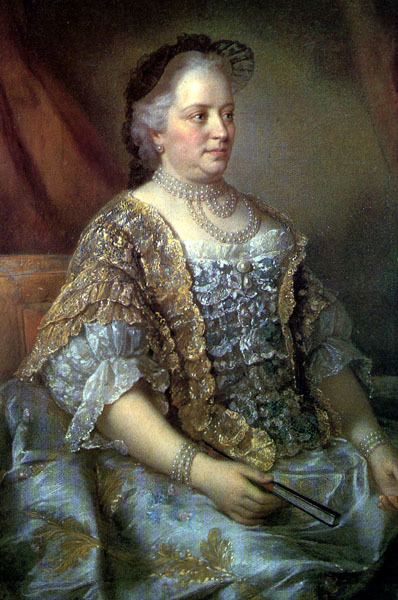
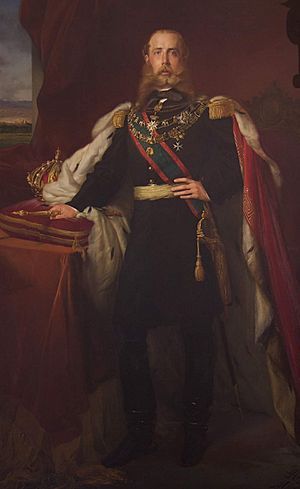
Maria Theresa, Archduchess of Austria, Queen of Hungary, Croatia and Bohemia, etc. reigned 1740-1780
The empress who reformed the empire while having a ton of children at the same time.
Maximilian , Emperor of Mexico, reign: 1864-1867
The last emperor of Mexico who supported liberal reform against the desires of Mexican conservatives.
Propaganda under the cut:
Maria Theresa:
From anon:
- chucked into ruling at age 23. while pregnant
- no prep!!!! Prussia invades Silesia!!! Ministers fucking around for their own provincial interests instead of for the Whole !!!!! and she has to somehow cope with all of this ....
- ALL WHILE being pregnant with Joseph (II) and we know that guy was just as ornery in utero as he was irl
- she's everything! He (Francis) is just ....Ken.
- YAS QUEEN rediversify that gene pool
- originally reluctant to participate in the 1st partition of poland (who wants galicia let's be real)
Maximilian
From: anon
- He loved plants
- He was a sassy man
- He had good taste
- He learned Nahuatl
- He’s cute (I mean look at him)
- He said “gay rights”
- He banned child labour in Mexico
- He gave many rights back to indigenous people
- Bro was wronged by France (haven’t we all?)
- He’s baby
- Got executed, come on, give him this guys 🥺
- He loved to design gardens and collect insects which makes me think he would've loved playing animal crossing
- An outspoken liberal in a period where the monarchy was still quite conservative.
- Vice-Admiral of the Navy who initiated scientific projects and exploration.
- Aesthetic girlie. Collected flowers, painted, wrote poetry, and kept a journal. He would have loved Tumblr.
- (Probably) gay or bisexual.
- Allegedly slapped Franz Joseph for refusing to allow Lombardy to have an elective body.
- Sisi's favorite brother-in-law (and not in a romantic way, fuck you Netflix)
- Refused to take the Mexican crown until a plebiscite had been held because he wanted to be invited by the Mexican people.
- Gave up all of his Austrian titles to go to Mexico because he believed he had made a promise to them.
- Also, his wife was amazing and capable and the amount of pure misogyny that certain historians and biographers have thrown at her is ridiculous. I know this isn't a Carlota poll, but she'd want Max to win.
- Netflix did him unbelievably dirty. Please give him this.
Did you know my man Max repatriated many pieces of Mexica artefacts?
He told Austria to cough up 3 main things that he thought were rightfully Mexican.
1. The Chimalli
2. A codex
3. A letter from Cortez to the chocolate man people seem to call Charles
The Austrians took their time but eventually gave back something
The Chimalli next to max so people know who to thank for it
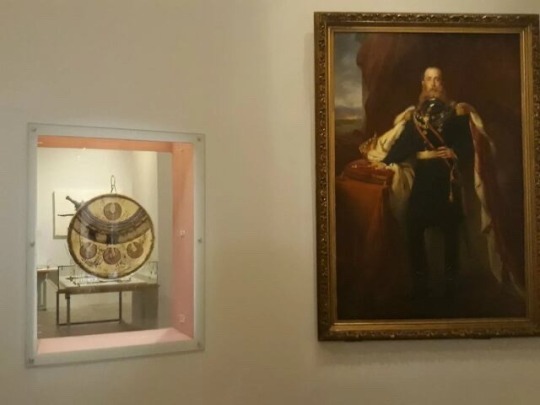
65 notes
·
View notes
Text


Queen Letizia of Spain presided over the official inauguration of the opening of the 2023/2024 school year, at the Camiño Ingles Infant and Primary School in Sigueiro, Oroso, A Coruña, Galicia, Spain | September 11, 2023
#royaltyedit#theroyalsandi#queen letizia#leti edit#leti 2023#spanish 2023#2023#spanish royal family#my edit
82 notes
·
View notes
Text

Constance of Hungary (?-1302), was a Queen consort of Galicia and a Grand Princess of Kiev by marriage to Leo I of Galicia, Grand Prince of Kiev (r. 1271–1301).
She was the daughter of Béla IV of Hungary and Maria Laskarina.
18 notes
·
View notes
Text




Through the Years → Queen Letizia of Spain (2,426/∞) 27 September 2024 | King Felipe VI and Queen Letizia leaving the restaurant O'Peirao, in Combarro, Pontevedra, Galicia, Spain. King Felipe and Queen Letizia have visited Princess Leonor at the Naval School of Marin, where she has been attending military studies for a few weeks. The three have had a 'brief family meeting' with Juan Carlos I, who is spending a few days in Sanxenxo, as confirmed by sources of the Royal Household. Zarzuela has pointed out that the King and Queen have traveled to Galicia to celebrate a private dinner to commemorate the 40th anniversary of the swearing in of the flag of King Felipe VI's graduating class of the Navy. (Photo By Elena Fernandez/Europa Press via Getty Images)
7 notes
·
View notes
Note
give us some Francex Spain headcanons please
This is so long and unorganised, apologies. TL;DR - Francis is lucky Antonio is so placid, because the moments he bites back genuinely frighten him, but the status quo of him sitting neatly on top of Spain always seems to swing back around. Again, Francis is lucky Toni's life ambition is to own a cafe...
For proper context - I imagine Antonio as Castille first, then comes to represent Spain as a whole, though I imagine there will be representations of Galicia, Catalonia/Aragon etc. just like there's the regions of Japan or Picardy for France or indeed how Arthur represents the UK internationally, but of course his brothers are still very much around. So, just for why I think Francis and Antonio have a relationship which goes way back.
Francis and Antonio I imagine as a sin/cos curve... like when Francis is up high, above Toni, things are 'correct' and in their natural place. They're friendly as Antonio is such a mild mannered friendly kid he's quite content to sit and listen to Francis crow about his amazing Kings and fancy court and so on. Francis loves to brag about how it's him that's the true heir to Rome, not the Germans. Spain nods, thinking about other more important things back home.
France used Spain very much as a bulwark against the al-Andalus parts of the Iberian Peninsula - as Francis at the time of Charlemagne and thereafter loved to see himself as the saviour of Europe, so as time goes by and we zip by the occasional Castille/France team up versus England/Portugal you start to get an increasingly influential Spain by the late 15th century, and the trouble is... Toni wants the same thing as Francis. And oddly enough, he's better at getting what he wants, despite seemingly not really trying. Maybe because he is honest to goodness just a little bit less... smug? But sometimes reading Spanish history in the 1500s is going like: Oh. Well that was convenient. It's not the reality of course, but it must have been very frustrating.
Antonio also dislikes the same things as Francis. So it's interesting. When they're fighting my God do they go at it. When they're on the same side their a pretty solid duo. But I love the idea of Antonio just pissing Francis off at times, and like... sometimes just by vibing. The man's vibes are zzzzzzzzzzzzzzzzzzzzz. And Francis - depending on his ego that day - finds it rancid. I know a lot of people don't like the way Antonio is characterised, but I love him as he is so shh. He's so disconnected at times from the reality going on around him. Only his immediate circle matters. He doesn't seem to really understand his Civil War. I think compared to Francis, who is much more in tune with his people... it gets messy.
The trouble comes because Francis is jealous, and likes his standing as number one in Europe. No-one can challenge that. But Antonio does, for a good century or even two, and maybe Antonio doesn't necessarily mean to, but his King and Queens do, or maybe Antonio finds that ambition suits him. The 15th through to mid 17th century gives him the ability to out class Francis. Maybe it's not intentional at first, but once Antonio finally grasps what he may be about to lose during the Thirty Years War and then the failing of his line of the Habsburgs... the ugliness comes out full force.
But... Like to show the overlap once Spain starts to really assert themselves in the late 15th Century, and how truly infuriated Francis must have been at points. They both have a vested interest in Italy - Antonio wins that one. Francis has a stake in Barcelona - Antonio wins that one. They both want the Low Countries. Antonio wins that one. Antonio gets Holy Roman Empire. And the actual creme de la creme... Antonio has divided the world in two with that blooming Treaty of Tordesillas. And the Pope was the one to approve that one. The Pope! The guy who says France is the most important nation for Christianity in Europe (save HRE but... oh look Spain is now Holy Roman Emperor too Jesus Christ).
Needless to say, Francis feels the universe is conspiring against him. God's not still mad about that Avignon Pope... is he?
So Francis is forever looking for ways to kick Antonio in the shins - to go back to him being the main guy in Europe, the guy who wants it and works for it and you know Francis more than anything wants to admired. Antonio... oh. Not sure what he wants more than anything really. A peaceful life. Which he did not get to have for most of his existence really. Arthur and Sad��k are handy for Francis to use from time to time to deal a smack to Antonio, but otherwise it's him looking at this guy who - let's be generous - is not the most ambitious man going, who seems to just grow more and more powerful, more and more influential and it eaaaaaaaaats at Francis.
But you know. Habsburgs. Religion. War. Antonio finally understands what he stands to loose, and ah. There's the ambition and drive. But he still looses, and now there's a Bourbon in charge and he is unable to ever fully get back up to that the ascent that the Trastámaras started. Pacte de Famille pops up again and again in the 18th Century, and I like the idea of it being characterised as Francis using Antonio's love of the Italies, and the fact that Arthur is increasingly a pain in the fucking arse for the both of them. Again, both Francis and Antonio love the same things. They also hate the same things. Sometimes that thing is a god awful English dude and sometimes love and hate are indistinguishable.
Like, Francis can loathe Arthur at points, but at least Arthur works to be a pain in the arse. Toni... wants to own a cafe. And he isn't even that good at it.
#this is so unorganised and i didn't talk about anything post 1800 but you get the point#early modern french-spanish relations is a yo yo and i love it#hetalia#hws spain#hws france#headcanon#op#q&a#historical hetalia
42 notes
·
View notes
Text
youtube
Here's the list of the TV Shows I used:
-The Brothers Sun, Fool Me Once, Abbott Elementary Season 4, All Creatures Great and Small Season 4, The Penguin, Echo Season 1, True Detective: Night Country Season 4, Belgravia: The Next Chapter, Griselda Limited Series, Mr. and Mrs. Smith, Shōgun, Bridgerton Season 3, Curb Your Enthusiasm Season 12, House of the Dragon Season 2, The Bear Season 3, Mr Birchum, The Lord of the Rings: The Rings of Power Season 2, Hazbin Hotel, The Perfect Couple, A Good Girl's Guide to Murder, Emily in Paris: Season 4 Part 1, MAYFAIR WITCHES Season 2, The Day of the Jackal, City of God: The Fight Rages On, Kaos, Bad Monkey, Fight Night: The Million Dollar Heist, REASONABLE DOUBT Season 2, Grotesquerie, It's Florida Man, No Good Deed, Agatha All Along, The Listeners, Severance Season 2, Bad Sisters Season 2, Lioness Season 2, Only Murders in the Building Season 4, Arcane Season 2, Sherwoood Season 2, The Creep Tapes, X-Men 97, Mary and George, Supacell -Masters of the Air Limited Series, Expats Limited Series , Feud: Capote vs. The Swans , The Walking Dead: The Ones Who Live, The Decameron, The Umbrella Academy Final Season, Time Bandits, The Boys Season 4, Industry, Cobra Kai Season 6, The Jetty, Rivals, Women in Blue, Sunny, Unprisoned Season 2, Those About to Die, The Serpent Queen Season 2, Land of Women, Gangs of Galicia, Presumed Innocent, My Lady Jane, The Famous Five, Cross, Dope Girls, Mr Bigstuff, That's 90s Show Season 2 , Uncle Samisk, Geek Girl, The Acolyte, Insomnia, Clipped, Mayor of Kingstown Season 3, The Big Cigar, Becoming Karl Lagerfeld, The 8 Show, Maxton Hall — The World Between Us, Sweet Tooth Final Season, Get Millie Black, Interior Chinatown, A Man on the Inside, The Sticky, The Disappearance of Kimmy Diore, Mr Loverman, The Sex Lives of College Girls Season 3, The Madness, Eric, American Horror Stories -The Tattooist of Auschwitz, The Big Door Size Season 2, Bodkin, The Sympathizer, Under the Bridge, The Veil, Franklin, Renegade Nell, Families like Ours, Mayfair Witches Season 2, The Empress Season 2, Senna, Like Water for Chocolate, Reacher Season 2 -Ronja the Robber's Daughter Part 1 & 2, We Were the Lucky Ones, Loot Season 2, Sugar, A Gentleman in Moscow, Ripley, Davey & Jonesie's Locker, Say Nothing, Wolf Hall: The Mirror and the Light, The Law According to Lidia Poët Season 2 -Boarders, The Girls on the Bus, Apples Never Fall, Knuckles, Supersex, Life & Beth Season 2, Death and Other Details, THE GOOD DOCTOR Season 7, Boy Swallows Universe, TED The Series, Criminal Record, Fallout, Masters of the Air, The Tourist Season 2, Alexander: The Making of a God, Tokyo Vice Season 2 , Feud: Capote vs. The Swans, The Regime, Expats, Sausage Party: Foodtopia, Breathless, English Teacher, Star Wars: Skeleton Crew, How to Die Alone, Win or Lose, Terminator Zero, Dexter, Like a Dragon: Yakuza, Fantasmas, Citadel: Honey Bunny, Teacup, Slow Horses Season 4, Hysteria, Black Doves, Landman, The Agency, Cruel Intentions, Laid, Lockerbie, S
3 notes
·
View notes
Text
King Felipe, Queen Letizia and Princess Leonor’s lunch in Galicia

Queen Letizia wore & Other Stories blouse, Burberry coat, blue jeans, Coreterno ring, Mango bag and Boss shoes for a lunch with husband and daughter in Galicia, Spain. More details on Regalfille.
#royal news#royal family news#royal family#spanish royal family#spain#king felipe#queen letizia#spanish#the spanish royal family#spanish royal fashion
3 notes
·
View notes
Text
Season of the Witch
- The origins (and places) of the Cailleach
The Cailleach, divine Hag/Crone of Gaelic folklore, is often portrayed as the embodiment of Winter. She is said to appear as the earth is dying, and is known as a bringer of storms. She is said to control the weather and determine the length of Winter and its harshness.
She is also said to be responsible for the formation of many of the country’s most prominent landmarks, and there are probably more geographical and archaeological features on the Irish landscape, that are associated with the Cailleach, than any other character in Irish folklore (see pics for landmarks & associations).
As a creator of the land and controller of the weather, the Cailleach would appear to represent an archetypal sovereignty/land goddess, whose origins may be traced back to Bronze-Age, or even Neolithic cosmologies.
However, despite her presence on the landscape, the Cailleach does not appear in ANY of the Irish literary myths. In fact, most of the traditions we now associate with the Cailleach (such as her association with winter), can only be traced back as far as the late-19th Century Gaelic revival in Scotland, where she features much more prominently than in Irish folklore.
Her earliest appearance in any written form is in an ‘untitled’ poem from a 16th Century manuscript (though its language suggests some of it was written at a much earlier date - possibly 10th Century) which, after it was first translated in 1899, has come to be known as ‘The Lament of the Old Woman of Beare’.
In the poem, the woman (name unknown) describes herself as an aging Queen of the Beara Peninsula in southwest Ireland; lamenting the passing of her youth and the riches and attention that went with it. The poem’s essentially christian narrative holds no hope of redemption or regeneration for the the old woman or the ‘old ways’ that she seems to represent.
Although the poem is untitled, the original introduction line reads… “Sentainne Bérri Cecenit íarna senad don chríni” (The Old Woman of Beare said this when senility had aged her).
The Old-Irish word ‘Sentainne’ meaning ‘Old-Woman’ would come to be replaced in later Middle-Irish with the word ‘Caillech’ - which in Old-Irish means “the veiled one” (specifically a ‘Nun’) but by the 10th Century, had come to signify any woman beyond childbearing years (which was OLD in those days).
The Old Irish ‘caillech’ ('veiled one'), from Old Irish ‘caille’ (‘veil/cloak’) is generally thought to be a loan-word from the Latin ‘pallium/palli(i)’ meaning ‘cover’ or ‘cloak’ (usually in reference to religious vestments - hence the 'nun' translation).
If so, this would make the Cailleach a ‘relative’ newcomer (etymologically speaking), which has led many medievalist academics to propound that she is an early-medieval folk figure rather than an ancient divinity (no surprise there !). . . However, this could be yet another ‘folk-etymology’ - where the meaning of a word changes due to a popular misconception regarding its origins.
Classical writings indicate that the “Cailleach” may have been known as early as the 5th Century BC; in the area known today as Galicia, which gets its name from a Celtic tribe known as the Callaeci. This tribe on the north-west of the Iberian Peninsula were first named as the ‘Kallaikoi’ by the Greek historian Herodotus in the 5th Century BC; before being Latinised by Roman writers to ‘Callaeci’ in the 2nd Century BC - a name which Ptolemy suggested as meaning ‘worshippers of the Callaec’.
Interestingly, in Spanish folklore, another name for Galicia is "Terra Meiga" (Land of the Witches).
Given that recent archaeological, linguistic and genetic evidence points to a migration into Ireland by ‘Proto-Indo European/Proto-Celtic’ speakers during the Bronze-Age (c.2000 BCE); rather than the traditional view of a later migration of ‘Celtic/Old Irish’ speakers during the Iron-Age, (c.500-100 BCE): It seems unlikely that the word(s) ’caillech/caille’ would be ‘borrowed’ from Latin into Irish at such a late date.
Both Italic (Latin) and Celtic (Irish) are closely related branches of the Indo-European language family; with both languages diverging from the original Proto Indo-European (PIE) language sometime after 2000BCE (The similarity between the Celtic & Italic languages has even led some scholars to believe that there was a Proto Italo-Celtic language spoken prior to their divergence from each other).
Therefore, it now seems likely that the word ‘caille’ derives directly from the PIE root word, *kel- meaning ‘to conceal/hide/cover’.
However. *kel- is also the root of another PIE word - *Kolyo - meaning ‘the coverer’, which is thought to describe a (hypothetical) goddess who is half maiden / half grotesque, governing the realm of death, but also the life which is sustained by death… sound familiar?
It is therefore possible that the modern Cailleach is a variation of this ancient female deity/character (*Kolyo), brought here in the Bronze Age by the same Indo-European speakers, from whom the peoples of Ireland and Scotland are descended ?
- Jane Brideson

The Labbacallee (Hag’s Bed) Wedge Tomb in Co. Cork is said to be another of the Cailleach’s dwellings; which in this instance, she shared with her husband, the druid Mog Roith. Local folklore tells us that during an argument, a huge rock lying in the nearby river was thrown by the Cailleach at her fleeing husband, pinning him to the riverbed. . .
#Cailleach#ancestors alive!#what is remembered lives#memory & spirit of place#ancient ways#sacred ways#folkways#traditions#old woman#crone#wisewoman#hag#Irish#megalithic#ancient history#Celtic#galicia#iberia#ireland#scotland#folklore#myth
17 notes
·
View notes
Text
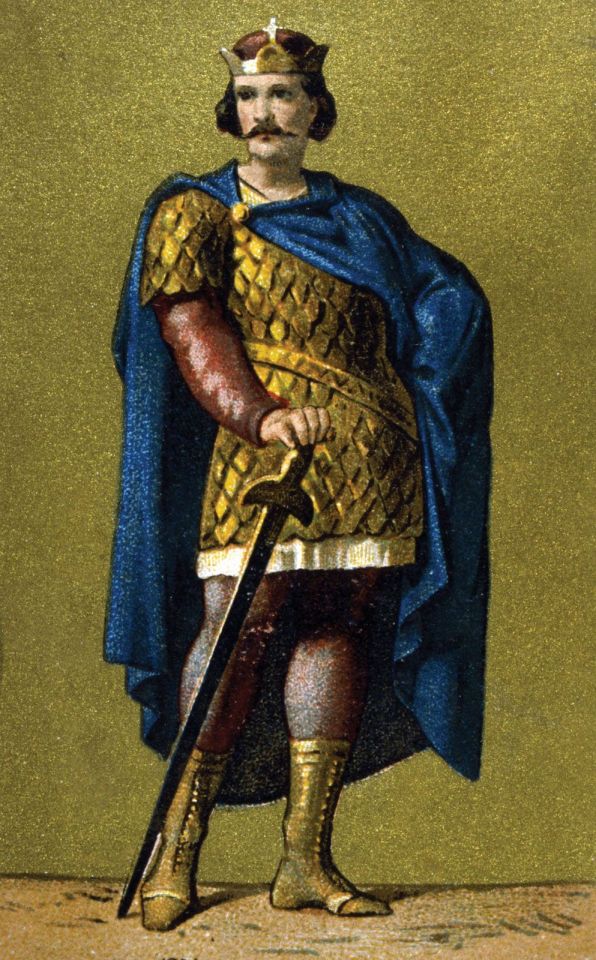



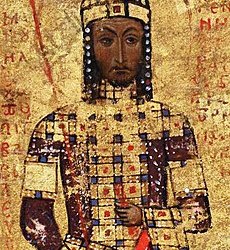

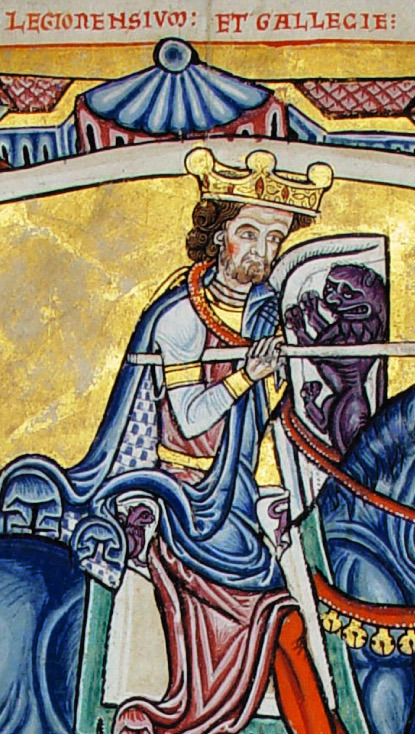
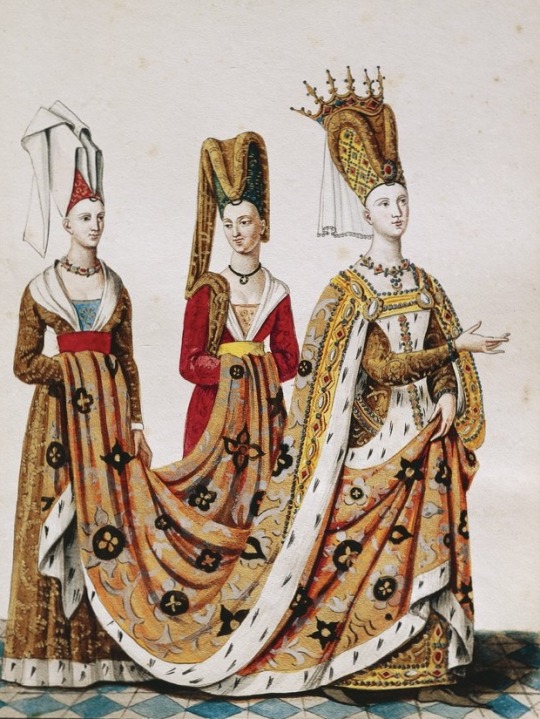





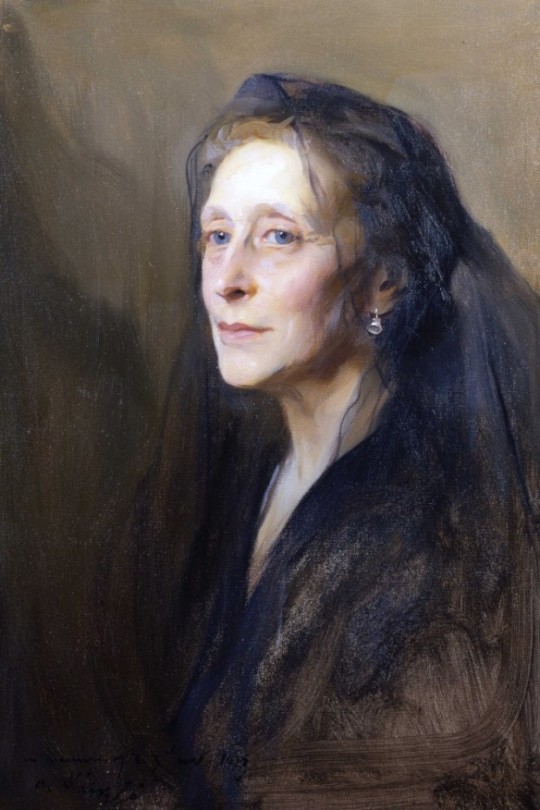
Royal Deaths, 24th September.
768 - Pippin III, the short, King of France.
911 - Louis the child, last Carolingian German King.
1120 - Welf II, Duke of Bavaria.
1143 - Agnes of Germany, daughter of Henry IV, Holy Roman Emperor.
1180 - Manuel I Komnenos, Emperor of the Byzantine Empire.
1228 - Saint Stefan Nemanjic, Grand Prince of Serbia
1230 - Alfonso IX, King of León and Galicia.
1435 - Isabeau of Bavaria, Queen and wife of Charles VI of France, who ruled during her husband's periods of insanity.
1732 - Emperor Reigen, 112th Emperor of Japan.
1812 - Friedrich Karl August, Prince of Waldeck and Pyrmont.
1834 - Pedro I, Emperor of Brazil and King of Portugal.
1860 - Marie of Württemberg, Duchess of Saxe-Coburg and Gotha, second wife and niece of Ernst I, Duke of Saxe-Coburg and Gotha.
1891 - Alexandra of Greece and Denmark, Grand Duchess Alexandra Georgievna of Russia, daughter of King George I of Greece, wife of Grand Duke Paul Alexandrovich of Russia.
1930 - Marie Juliette Louvet, mistress of Prince Louis Il of Monaco, mother of his only child Princess Charlotte of Monaco.
1950 - Princess Victoria of Hesse and by Rhine, Marchioness of Milford Haven, granddaughter of Queen Victoria.
3 notes
·
View notes
Note
Visenya at 13, hearing Aurelian’s full title for the first time: Ugh that’s so obnoxious, why would anyone want to be called something so ostentatious? I would never punish my son or the pages by making him have some long puffed up mama
Visenya at age 20, returning to the Spring Court for the first time in three years: Please use my son’s full title; His Exalted Highness, Crown Prince Theomore, heir to the throne of the Autumn Court and son of the Noble and Ancient House de Lioncourt
Visenya’s own title as High Queen is Her Exalted Majesty Visenya Astraea Regina of the Noble and Ancient House de Lioncourt, High Queen of the Autumn Court; which is obviously a mouthful so she shouldn’t be complaining but girl does love to brag
And yes Aurelian’s title was the same as Theomore’s back when he was Crown Prince
And yes, her naming her son Theomore is a spoiler
Please Riley, as someone who actually lives in a kingdom with a whole-ass king, I can tell you that that isn't a mouthful of a full name.
*My* King's full name (titles included) is: His majesty Felipe Juan Pablo Alfonso de Todos los Santos de Borbon y Grecia (aka Felipe VI of Spain), King of Spain, Castilla, Leon, Aragon Navarra, Granada, Jerusalem, Toledo, the Two Sicilies, Valencia, Galicia, Mallorca, Menorca, Sevilla, Sardinia, Cordoba, Murcia, Jaen, the Algarves, Algeciras, Gibraltar, the Canary Islands, the East and West Indies, the 'Isles and Lands of the Oceanic Sea', Hungary, Dalmatia and Croatia; Archduke of Austria; Duke of Burgundy, Brabant, Milan, Athens, Neopatras, Limburg, Lotharingia, Luxembourg, Gelderland, Styria, Carniola, Carinthia and Württemberg; Count of Habsburg, Flanders, the Tyrol, the Rousillon, Barcelona, Artois, Hainaut, Namur, Gorizia, Ferrette, Kyburg and Goceano; Count Palatine of Borgoña; Lord of Vizcaya, Molina, Salins-les-Bains, Mechelen, Slovenia, Pordenone and Tripoli; Landgrave of Alsace; Prince of Swabia; Marquis of Oristano; Margrave of the Holy Roman Empire and Burgau; Captain General of the Armed Forces; and I'll stop now but there are MORE
Because we have a parliamentary monarchy many of those titles hold no power or are merely symbolic (literally like the king himself because he does no-thing) and are reminiscent of the time we were the Spanish empire and total pieces of shit, but I do urge you to add more titles to your ocs lol
2 notes
·
View notes
Text

Maria Theresa of Austria, Queen of the Two Sicilies
Artist: Francesco Torr
Date: 1837
Medium: Oil on canvas
Collection: Palace of Caserta, Caserta, Southern Italy
Maria Theresa of Austria
Maria Theresa (Maria Theresia Walburga Amalia Christina; 13 May 1717 – 29 November 1780) was ruler of the Habsburg dominions from 1740 until her death in 1780, and the only woman to hold the position suo jure (in her own right). She was the sovereign of Austria, Hungary, Croatia, Bohemia, Transylvania, Mantua, Milan, Galicia and Lodomeria, the Austrian Netherlands, and Parma. By marriage, she was Duchess of Lorraine, Grand Duchess of Tuscany, and Holy Roman Empress.
#portrait#maria theresa of austria#queen of the two sicilies#francesco torr#europe#19th century painting#oil on canvas#tiara#jewels#red dress#queen#drapery#european#historical portrait#austrian nobility#painting#artwork#fine art#oil painting#european art
4 notes
·
View notes
Text
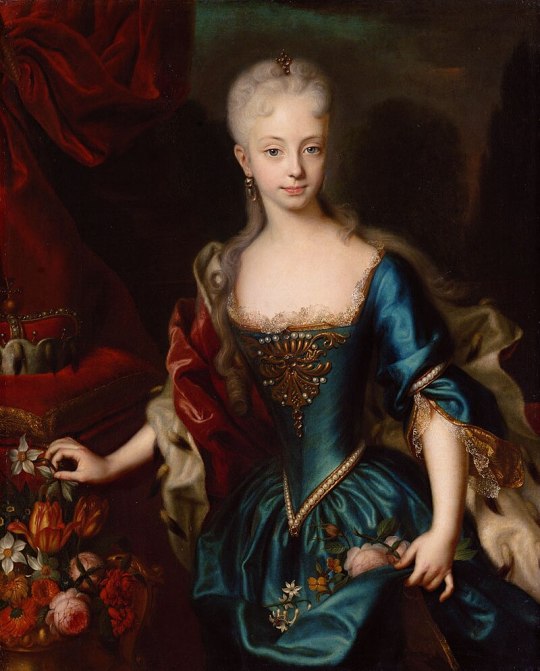

Maria Theresa, Archduchess of Austria, Queen of Hungary, Croatia and Bohemia, reigned 1740-1780
No one has ever girlboss-ed harder
From anon:
- chucked into ruling at age 23. while pregnant
- no prep!!!! Prussia invades Silesia!!! Ministers fucking around for their own provincial interests instead of for the Whole !!!!! and she has to somehow cope with all of this ....
- ALL WHILE being pregnant with Joseph (II) and we know that guy was just as ornery in utero as he was irl
- she's everything! He (Francis) is just ....Ken.
- YAS QUEEN rediversify that gene pool
- originally reluctant to participate in the 1st partition of poland (who wants galicia let's be real)
Ferdinand I, Emperor of Austria, reigned 1835-1848
Probably the person who was most relieved about his own abdication
from anon:
Whatever learning or mental disability he suffered from, he was far from untalented. He spoke five languages, played the trumpet and the piano, and had a keen interest in technology natural sciences. He even founded the Academy of Sciences in Vienna.
He's mostly blameless when it comes to policies of the Austrian state before 1848, which is probably why he remained popular throughout his life. Well, that and his charity.
Had a surprisingly good relationship with his wife, considering he might not have even been capable of consumating the marriage.
Proved to be a capable manager of his estates after the abdication.
Generally seems like a fairly chill guy, hence the moniker "The Benevolent".
#house of habsburg#habsburg#best habsburg bracket#long reigning rulers will get progressively older portraits as we get through the rounds#if they get through the rounds#maria theresa#ferdinand i
95 notes
·
View notes
Text
Twenty Questions for Fic Writers
I was tagged in this by the lovely @once-in-a-blue-moon-rising. Thank you! 😊 It's nice to revisit my fics, it's been a while.
1. How many works do you have on AO3?
23
2. What's your total Ao3 word count?
1,014,041 words. Yikes 😂
3. What fandoms do you write for?
Most of my works are in the La Casa de Papél fandom. Before that, I was in the Miss Fisher's Murder Mysteries fandom. I also have a handful of ficlets in the fandom for the Stormlight Archive books by Brandon Sanderson.
4. What are your top 5 fics by kudos?
My top 5 fics by kudos are all in the LCDP fandom, and they're all +100k words.
Number one is 'The White Queen', a Regency romance AU. It's got almost double the amount of kudos than the second-highest fic.
'Personal Relationships', a canon-compliant AU.
'Back to Galicia', a movie star second chance AU.
'Safe House', a witness protection program AU.
'Tell Me What You Like', a collection of canon 'fill the gap' smutty scenes.
5. Do you respond to comments?
I used to 😅 I used to love spending a lot of time writing elaborate and personal responses to comments, and I in fact met several of my best fandom friends through comment conversations! However, over time I just simply didn't have the energy for it anymore. There are still a bunch of super lovely comments on the last chapter of my last fic that I really should have responded to, but I simply don't have the mental space. I do feel bad about that 🙈
6. What is the fic you wrote with the angstiest ending?
I don't write angsty endings. I love angst in the main fic, but I'm committed to HEAs :)
7. What's the fic you wrote with the happiest ending?
Probably 'The White Queen', where I spent about 50k words describing just how happy they were 😂
8. Do you get hate on fics?
I've had a few nasty comments, but they're absolutely nothing compared to the vast sea of incredibly kind, lovely, and supportive comments I've gotten. I've been very lucky.
9. Do you write smut? If so, what kind?
My earlier work is almost entirely smut 😂 It's funny to see my later fics evolving into containing more and more plot, and less and less smut. I wonder how my readers felt about that 😂 The smut is explicit, but I've always tried to keep it tasteful.
10. Do you write crossovers? What's the craziest one you've written?
I haven't written any crossovers yet. I'm usually obsessed with only one piece of media at a time :)
11. Have you ever had a fic stolen?
Yes -- I discovered a few years ago that one of my LCDP fics had been stolen and put on Amazon for money! It took ages to explain things to Amazon (because I didn't own the characters) and to get it taken down. It was a very icky feeling.
12. Have you ever had a fic translated?
Yes, I've had several requests from people who wanted to translate my fics into Russian :)
13. Have you ever co-written a fic before?
No, and I don't think I could. I love to brainstorm about plot with a friend or beta reader, but I couldn't actually share the writing process. I'm too much of a control freak 😅
14. What's your all-time favourite ship?
If we're only looking at the first 2 seasons of LCDP, then Serquel. However, the subsequent seasons partially ruined them for me, so maybe I'd better choose Phryne and Jack from Miss Fisher's Murder Mysteries.
15. What's a WIP you want to finish but doubt you ever will?
My only unfinished fic on AO3 is 'Tell Me What You Love' in the LCDP fandom, but that's more a series of vignettes that I kept open in case I wanted to add more. It wasn't really meant to have an ending. That said, I don't think I'll ever add to it anymore.
16. What are your writing strengths?
Dialogue, I think. I also think in general I'm a clear writer who gets to the point without too many flourishes or detours.
17. What are your writing weaknesses?
For a long time, I felt like I couldn't come up with any kind of original plot, but I think I got better at that over time. I'm still pretty bad at descriptions, though. I just want to get to the action and dialogue, and I forget that my readers are not in my head and can't see the characters or surroundings like I do :D
18. Thoughts on writing dialogue in another language in fic?
I wouldn't include more than a few words of phrases sprinkled through the dialogue.
19. First fandom you wrote for?
Miss Fisher's Murder Mysteries. I was all of 26 when I first discovered fanfiction!
20. Favourite fic you've written?
That's such a tough choice 😅😅 If I absolutely have to choose, then I think 'The White Queen'. I was really just writing the exact fic that I wanted to read myself with that one. I had so much fun with it, I was so inspired that the chapters literally flowed out without any effort, and I got the most amazing response to it from the fandom. It will always be extra special to me 😊
I'm not tagging anyone in particular, but if you see this and want to do it, consider yourself tagged! :)
5 notes
·
View notes